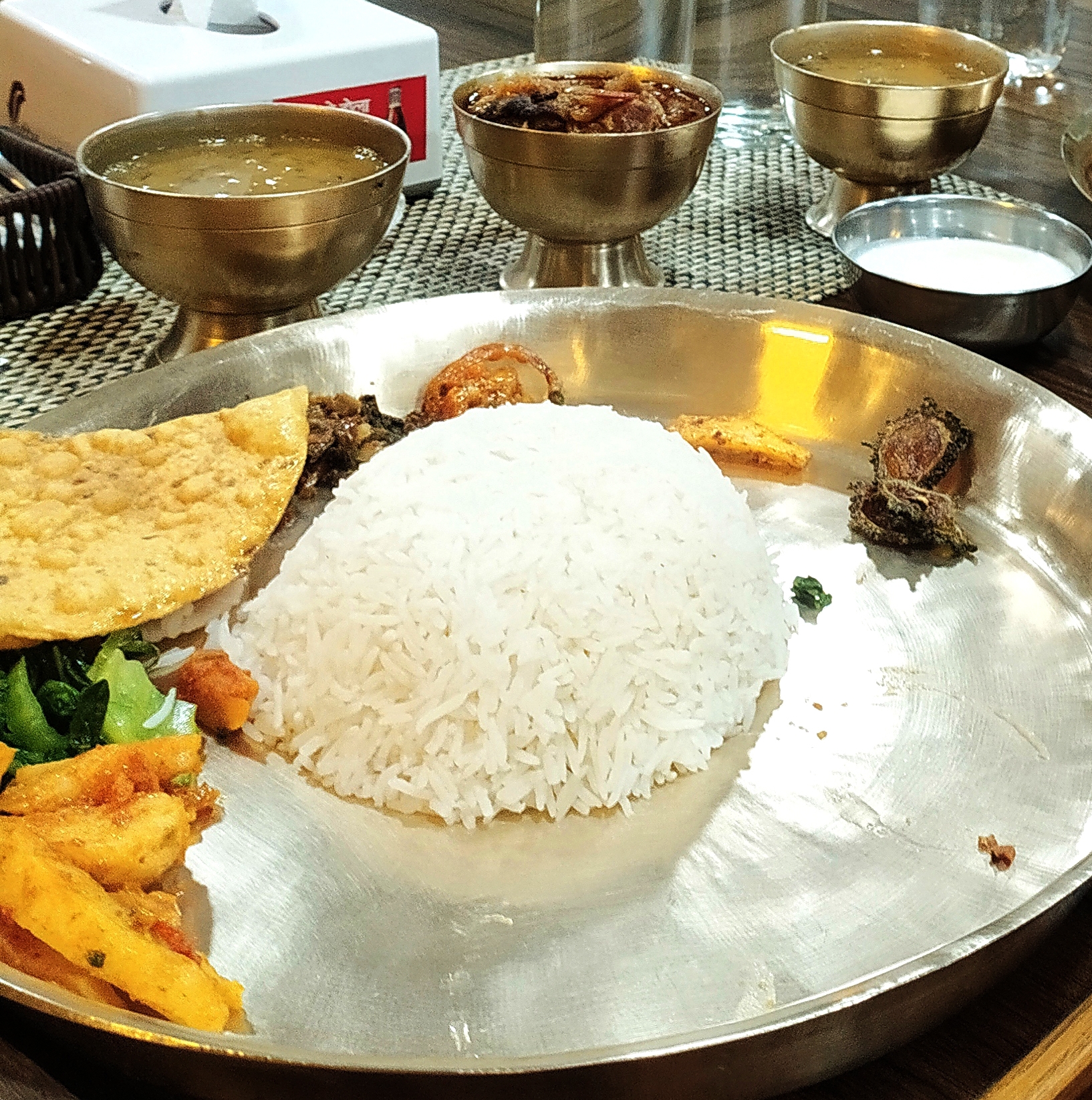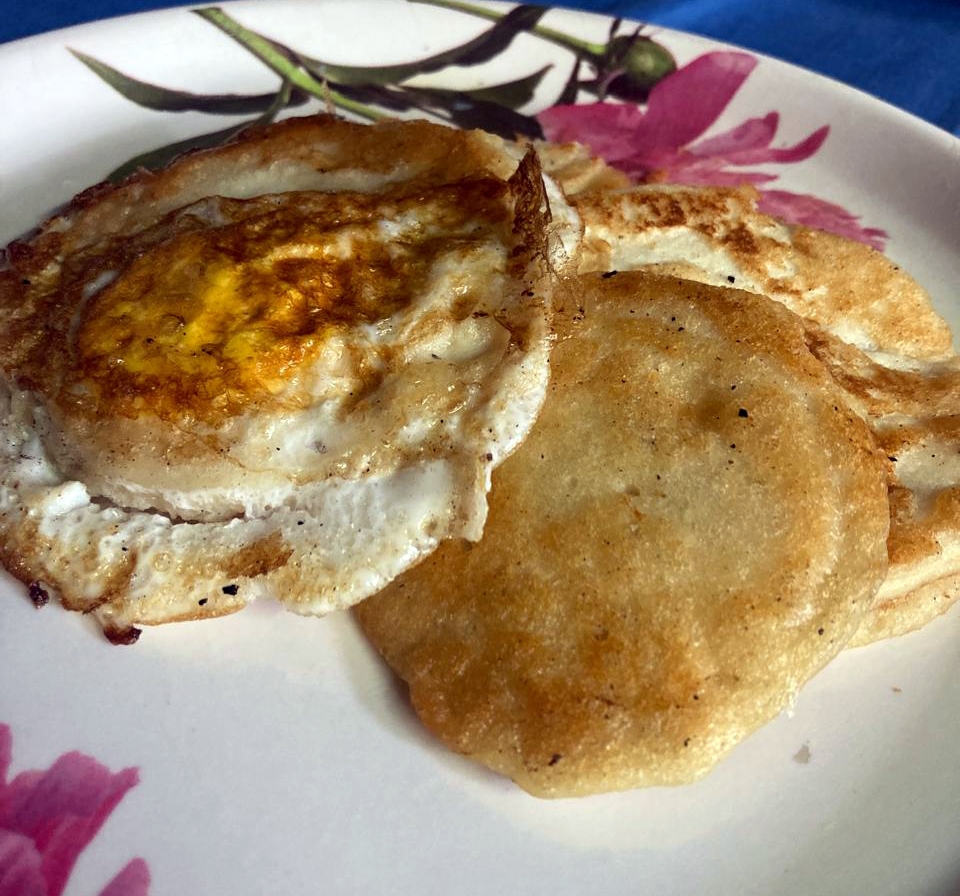1. Introduction
Nepal is renowned for its breathtaking mountain vistas, ancient temples, and rich spiritual traditions, as well as its distinctive cuisine. Sampling the best Nepali food offers a deep insight into the local culture and customs.
The country’s diverse ethnic groups reflect their connection to the land and climate through their unique dishes. Himalayan foods are designed to keep the body warm in winter, while the fertile Terai region provides an abundance of crops and spices for flavorful cooking.
2. List of Popular Nepalese Food
Despite limited arable land, Nepal's culinary diversity is a testament to its varied geography and cultural richness. For a true taste of Nepal, exploring these 15 must-try Nepali dishes will be a memorable experience.
Dalbhat
Dal Bhat is more than just a meal; it embodies Nepali hospitality and daily life. This traditional dish offers a harmonious blend of nutrition and flavor, reflecting the region’s agricultural practices and dietary traditions. This is also the national dish of Nepal. It’s a quintessential Nepali meal, consisting of white steamed rice (Bhat), lentil soup (Dal), vegetable curry, and pickles. Meat can be added for those who prefer it. Commonly enjoyed for lunch or dinner, it is widely available in homes, restaurants and teahouses across Nepal, particularly in Kathmandu.
Packed with essential nutrients like proteins and carbs, Dal Bhat is not only satisfying but also affordable, offering great value for money. Many people believe it’s beneficial for health. If you’re visiting Nepal, don’t miss out on this local cuisine.
Momo (Nepali Dumpling)
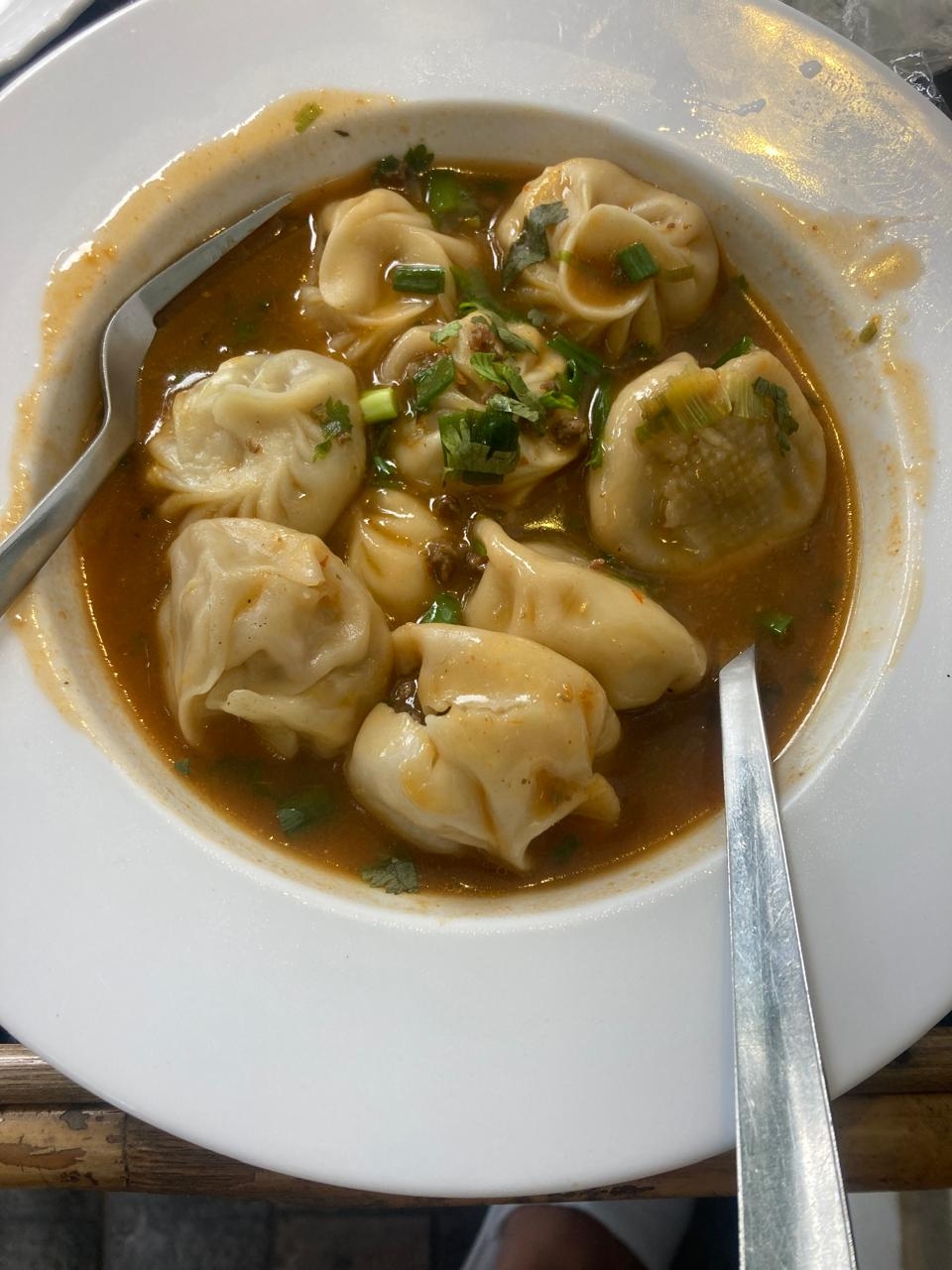
Momo is a favorite snack in Nepal. People eat it all day – for breakfast, lunch, dinner, and even just as a snack. Momo are fried and steamed dumplings. They are filled with chopped meat, vegetables, spices, onions, ginger, and garlic. These dumplings are also flavored with tomatoes, herbs, and sesame seeds, making them extra tasty.
The history of momo in Nepal dates back to as early as the fourteenth century. Momo was initially a Newari food in the Katmandu valley. It was later introduced to Tibet, China and as far away as Japan by a Nepalese princess who was married to a Tibetan king.
You can find momos in almost every restaurant in Nepal, of different price ranges depending on the ingredients and location.
Samay Baji
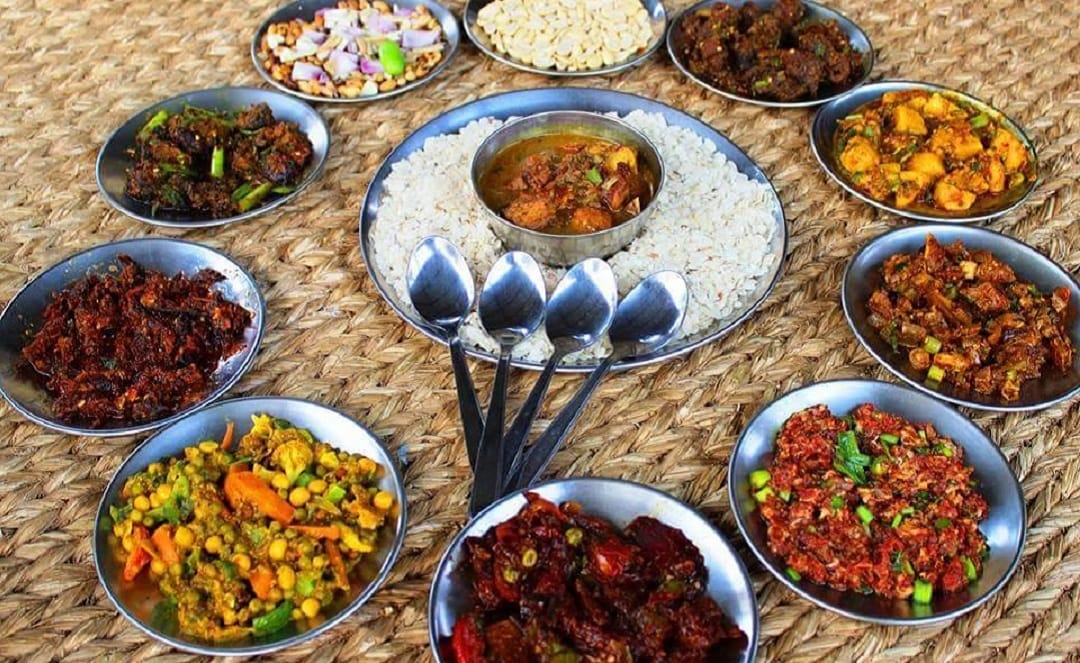
The Samay Baji is a traditional snack cherished in the Newar community of Nepal, featuring a diverse array of savory and sweet items served together on a single platter.
The Newars, an ethnic group indigenous to the Kathmandu Valley, are renowned for their distinctive cultural practices and cuisine. The Samay Baji is commonly served during festivals, celebrations, and religious ceremonies, making it a vital part of Newari culinary tradition.
A Samay Baji includes a variety of components, each with unique ingredients and preparation methods. Here are some of the most common items you'll find:
- Beaten Rice (Chiura): Flattened rice that is light and crispy, made by pounding rice grains until they become thin and flat.
- Roasted Black Soybeans (Bhatmas): Lentils that are roasted and seasoned, typically spicy, and adding a crunchy texture to the set.
- Aalu-wala: A spicy potato salad made from boiled potatoes mixed with various spices, commonly featured in the set.
- Fried Boiled Eggs: Hard-boiled eggs that are lightly fried until golden, providing a protein-rich component.
- Chatamari: A traditional Newar dish resembling a crispy rice crepe, topped with a variety of ingredients.
- Wa (Wo)/Bara: Lentil patties made from lentils such as mung beans or masoor dal.
- Chhwela: Roasted buffalo meat that is charred, cooled, and then mixed with spices and marinated for a flavorful dish.
- Pickles (Achar): Tangy and spicy pickles that complement the other items in the set.
The Samay Baji offers a rich taste of Newari cuisine, showcasing the intricate flavors and textures that are central to Newar culinary heritage.
Sel Roti
Sel Roti is a traditional Nepali rice-based doughnut, beloved in Nepal and neighboring regions. This delightful treat is commonly enjoyed at breakfast and is particularly made as an offering during Hindu festivals like Dashain and Tihar, especially by Brahmins and Chhetris.
The preparation of Sel Roti involves mixing rice flour, sugar, water, and butter to create a batter, which is then shaped into round donuts and deep-fried until crispy. Often paired with yogurt or tea, this sweet delicacy combines simplicity with significant cultural importance, making it a central element of Nepali culinary traditions.
Gundruk
Gundruk is a fermented leafy green vegetable, commonly made from mustard greens, radish leaves, or cauliflower leaves. The fermentation process gives Gundruk its distinct tangy flavor while preserving the vegetable.
Hailing from the mountainous regions of Nepal, Gundruk was developed out of necessity to retain nutrients and minimize waste in environments with limited resources. This method of fermenting leafy greens to extend their shelf life is reminiscent of pickling practices in various cultures. For example, Japan has a similar dish called Takana, made by fermenting mustard greens.
At first, Gundruk’s tangy bite and rich umami flavor might be unexpected. However, as you continue to taste it, you'll likely find its unique flavor becomes increasingly enjoyable. Once you adjust to its distinctive taste, Gundruk often becomes a craving-worthy treat.
Yomari
Yomari is a highly popular Newari dish, celebrated for its unique flavor and cultural significance. This steamed dumpling, typically shaped like a fish, is made from fresh rice flour and filled with a sweet blend of chaku (molasses) or khuwa (condensed milk) and sesame seeds. It is both wholesome and delicious, making it a nutritious snack or dessert.
Also known as Ya-Mari—where "Ya" means "like" and "Mari" means "delicacy"—Yomari is enjoyed during the festival of Yomari Punhi and is also prepared for special occasions such as birthdays and baby showers. This delightful treat is a beloved part of Nepalese cuisine.
Dhindho or Dhido
Dhido is a traditional Nepali dish valued for its simplicity and nutritional benefits. It has long been a staple for people in rural and middle mountain regions of Nepal, particularly in arid areas where growing rice or wheat is challenging. In these regions, Dhido serves as a vital food source when other crops are difficult to cultivate.
Typically, Dhido is served in large mounds at the center of a platter, accompanied by a variety of side dishes in smaller portions. To eat it, people use their right hand to tear off small, bite-sized pieces of Dhido, which are then dipped or rolled in accompanying sauces before being eaten. It is customary in Nepal to wash your hands before and after eating. Dhido is best enjoyed steaming hot, as it tends to harden once it cools.
Juju Dhau - The king of yoghurt
Juju Dhau is a celebrated Nepalese yogurt, especially renowned in Bhaktapur and the Kathmandu Valley. Known as "The King of Yogurts" in the Newari language, this sweet, custard-like yogurt is a traditional delicacy made by the Newars. Originating from Bhaktapur during the ancient Malla era, Juju Dhau is also enjoyed throughout the Newar community, including Kathmandu Valley and Patan.
Prepared from buffalo milk through bacterial fermentation, Juju Dhau is made by boiling milk and fermenting it in pre-warmed traditional clay pots called "kataura" or "maato 'ko' kataura." Spices like coconut and cardamom provide natural sweetness, eliminating the need for added sugar. The porous clay pots, wrapped with rice husks and kept in warm places, allow the milk to evaporate gradually, resulting in a rich, thick yogurt.
Juju Dhau's rich, creamy taste and purity make it a revered treat, integral to festivals and religious celebrations in Nepal, such as Dashain, Tihar, and Lohsar.
Gorkhali Lamb
Gorkhali Lamb celebrates the bold and vibrant flavors of Gorkha, a region renowned for its rich culinary traditions.
For meat enthusiasts, Gorkhali Lamb is an essential dish to try during your travels in Nepal. This dish features tender, slow-cooked lamb pieces simmered in a hearty curry with chunks of potatoes and coarsely chopped onions. The lamb is coated with a spicy mixture before grilling, creating explosive flavors with each bite. The curry is perfectly complemented by flatbread.
Thukpa
Thukpa is a spicy and flavorful Nepali noodle soup, celebrated for its health benefits. It helps warm the body in cold climates and promotes perspiration in hot weather.
Influenced by Tibetan cuisine, Thukpa can include goat, lamb, or chicken. It is particularly effective as a heat source in Nepal's cold, hilly regions and provides essential nutrients, making it both a delicious and nourishing choice.
Choila
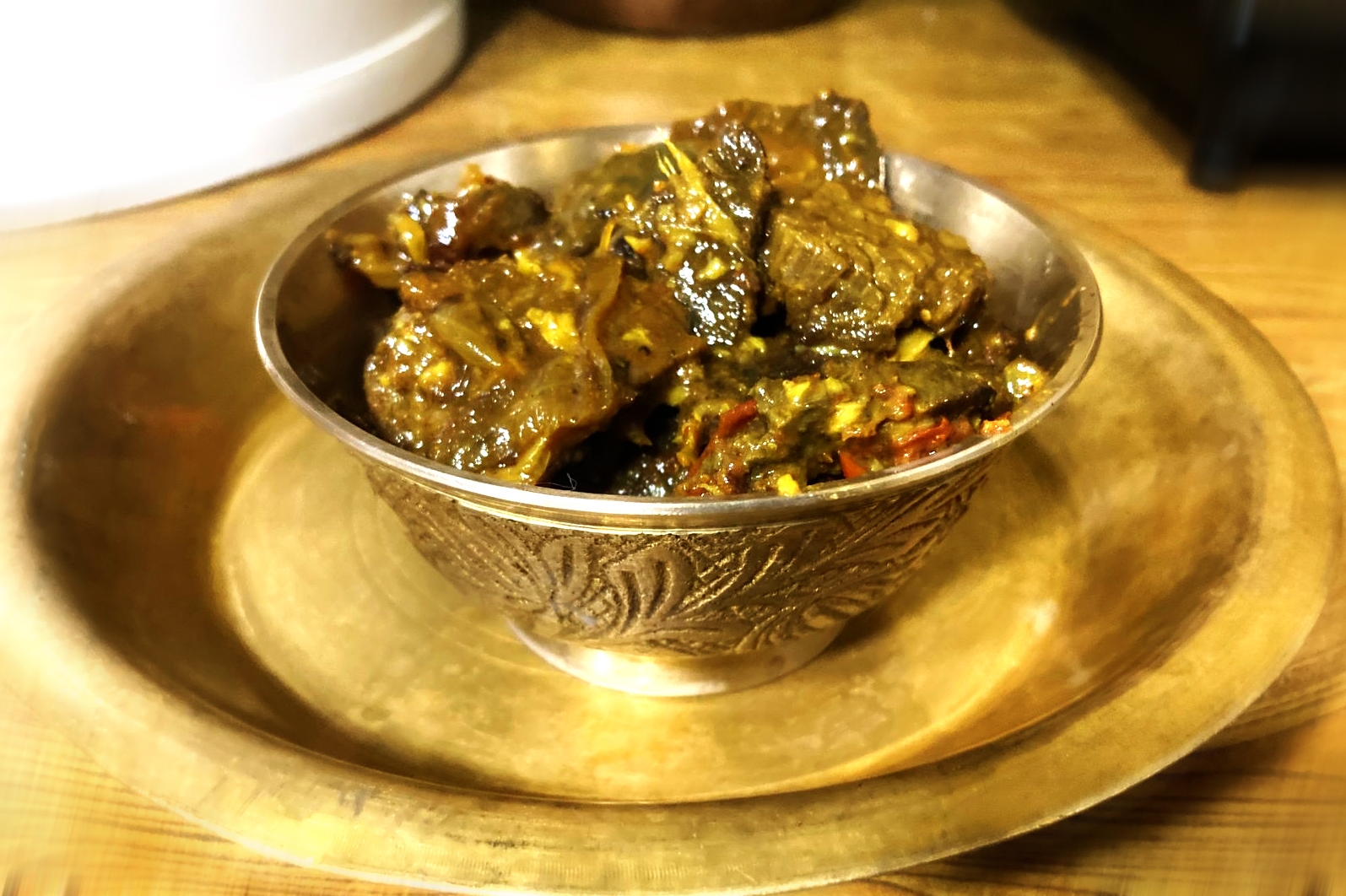
Choila (or Chhoyela) is a classic Newari dish known for its spicy kick, traditionally made with water buffalo meat. It is typically served with beaten rice, black-eyed beans, potato pickle, and cooked vegetables, making it a central part of Samay Bhaji and a staple during festivals in Nepal.
Choila comes in several varieties, including buff Choila, chicken Choila, and veg Choila. Veg Choila, made with soya chunks, mimics the traditional Choila's flavor but does not have the meaty taste.
Chatamari
Chatamari is a traditional Newari dish also enjoyed by various Nepalese communities. Often referred to as Newari pizza, it resembles a rice-based crepe or flatbread.
Chatamari is a round bread made from rice flour and typically topped with minced meat, such as buffalo or chicken, along with onions, coriander leaves, and eggs. For those who prefer vegetarian or vegan options, Chatamari can be prepared with a topping of sugar or a mix of vegetables. This versatility makes Chatamari a suitable choice for both vegetarians and vegans.
Sekuwa
Sekuwa is a renowned Nepali dish, especially beloved by meat enthusiasts. This popular food features marinated meat skewered and grilled to perfection, seasoned with a blend of spices including cumin, coriander, red chili, turmeric, salt, and Szechuan pepper. Typically made with goat, buffalo, chicken, or pork, the meat is grilled over an open flame, imparting a distinctive smoky flavor.
Sekuwa is a versatile dish that shines at celebrations, family gatherings, and as a popular street food. It is commonly served with puffed rice, beaten rice, tortillas, or regular rice. In Nepal, it is often accompanied by radish pickles (mulako achar) and spicy tomato or mint chutneys.
Bara
The Bara recipe blends black and moong lentils with beaten eggs, lean ground chicken or lamb, and minced vegetables, seasoned with a touch of salt, ginger, and garlic to create a flavorful Nepalese dish.
Resembling a pancake, Bara is light and ideal for snacking. Originally from Nepal's Newar region, it has become widely popular across the country.
3. What are some of the most common ingredients used in Nepalese cuisine?
Nepalese cuisine boasts a diverse range of ingredients, showcasing its rich cultural heritage and regional diversity. Key components include rice, lentils, a variety of vegetables, and spices such as turmeric, cumin, coriander, and fenugreek. Essential flavorings like ginger, garlic, onions, and chilies are used in different combinations to create the flavorful and varied dishes that define Nepalese cooking.
4. Conclusion
In summary, Nepalese cuisine reflects the country's rich cultural heritage and regional diversity, featuring staples like rice, lentils, and a variety of vegetables and spices. Its dishes offer a wide range of flavors, from spicy to aromatic, and combine fresh, local ingredients with traditional cooking techniques. Whether for everyday meals or special occasions, Nepalese food embodies the essence of Nepal’s cultural and culinary traditions.

